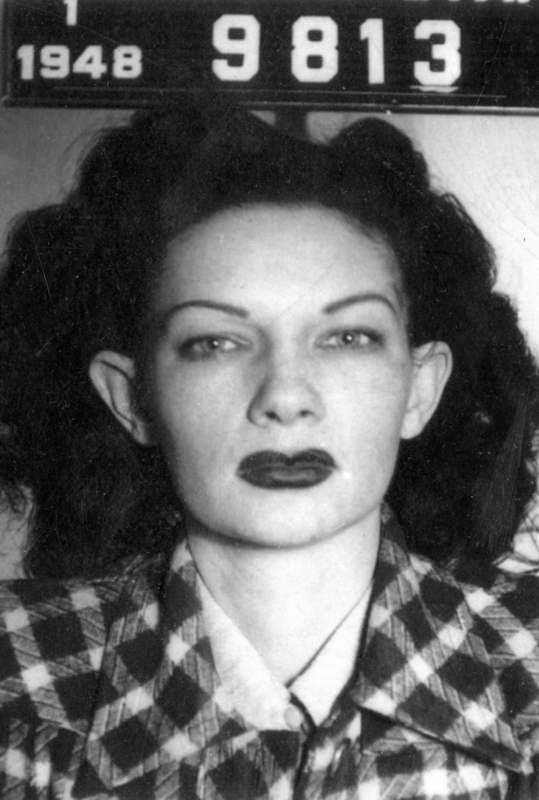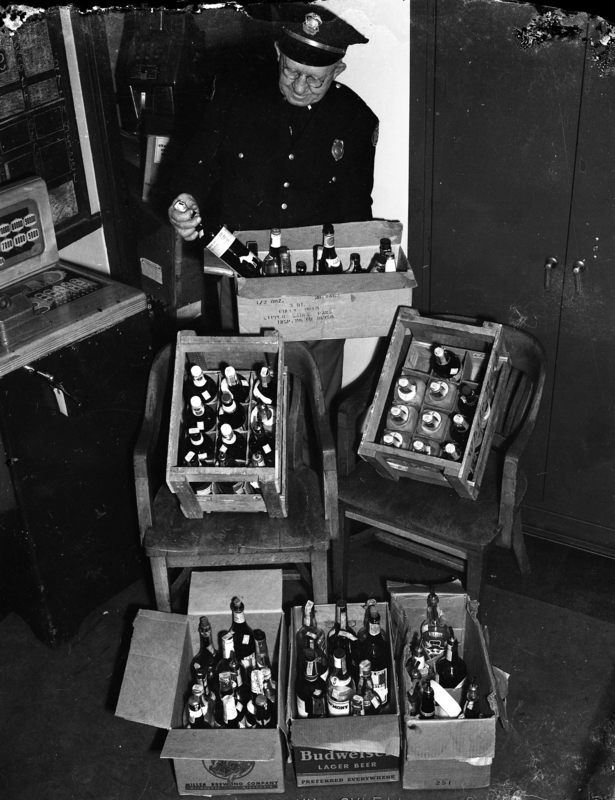Crackdown on Vice, 1950s
Ogden City officials began a systematic “clean up” of 25th Street in the late 1940s, after the economic and population booms of World War II. Rulon White, newly elected mayor, was highly focused on crime and gave county attorney, Maurice Richards, free reign to target businesses engaged in bootlegging, gambling, and prostitution.
Although prohibition laws had been repealed, alcohol sales were limited to state liquor stores and licensed bars and clubs. Many of the businesses on 25th Street and in the downtown area participated in illegal liquor sales. Some operated without licenses; others made legal alcohol purchases but resold the beverages at a markup when the liquor stores were closed. Liquor confiscated during police raids was turned over to the State Liquor Commission and resold.
Gambling had long been a favored pastime on 25th Street, but as raids increased, proprietors found more creative ways to hide their machines. One business owner rigged up a remote control slot machine. From behind the counter he could control the machine allowing only trusted customers to play. Illegal gambling machines were either destroyed—often in dramatic fashion for the newspapers—or they were sold in states that allowed gambling.
In late 1950, as the United States engaged in the Korean War, military officials considered reactivating the military installations around Ogden. Increased prostitution and the spread of venereal diseases was a major concern for local and federal leaders. The Utah Social Hygiene Association was appointed the watchdog group to survey prostitution and disease rates. Brothel raids seemed to prove effective as in 1952 Ogden reported a lower venereal disease rate than the state for the first time in several years.
Also in 1952, the Ogden Police Department organized a narcotics office led by Detective Arlyn Garside. His office was charged to work with state and federal authorities to prevent narcotics traffic in Ogden, though newspapers mostly reported on the confiscation of marijuana. In 1955 a three pound bag of marijuana was found at the bottom of a freight car. Police estimated its value at about $6,000.
While city leaders claimed their efforts a success, it is difficult to determine just how effective they were in the long-term, and politicians have often made promises to keep cleaning up Ogden’s streets. It is certain, however, that this era helped cement 25th Street’s legendary status in Ogden history.



